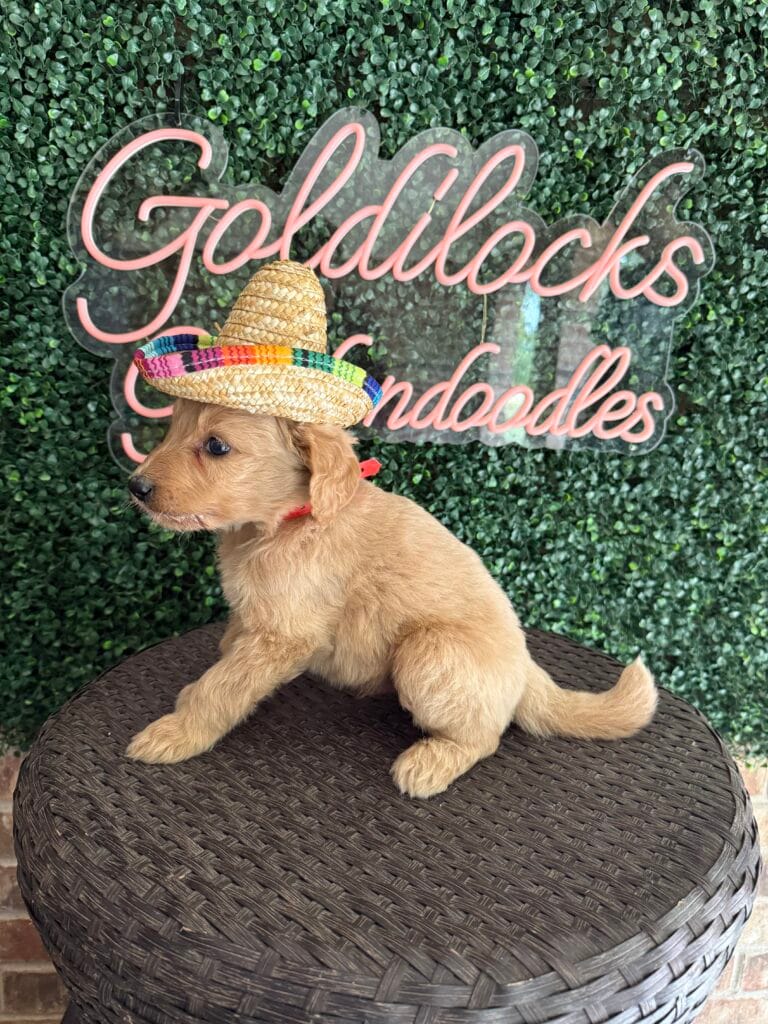Here at Goldilock’s Goldendoodles, we potty train our puppies in as little as 1-2 weeks and consider potty training a priority when it comes to finding puppies their forever homes. Here are three important things to consider when potty training your puppy!
1. Establish a Potty Area
You don’t want your puppy wandering all over to find a spot for their business, so designating particular potty areas is crucial for training! This means repetition, repetition, repetition — taking the puppy out to the chosen area every time a bathroom break is necessary, letting them smell the area and do their business, and reinforcing a command with praise and treats!
Puppies require more bathroom breaks than adult dogs, so creating a routine every two hours with this method in the same potty area is a good start. Additionally, creating a feeding schedule, potty areas, and playtime are general ways to establish consistency during training.
2. Crate Training
Crate training is a great way to start conditioning your puppy for their own safe space indoors. The process requires patience; dogs are naturally playful! According to the AKC, the right crate and mindset for your dog are vital — you want the right size crate and a calm demeanor for the pet to associate the space with… plus plenty of treats as incentives. Ten-minute intervals are a good introduction before working your way up to longer periods of time.
A smart approach to crate training, even after a 10-15 minute interval inside the crate, is directing them right to your designated potty area and reinforcing the potty command before AND during! This way, the puppy will associate the place with the phrase. If your puppy soils in the wrong area, don’t scold or punish them afterward; instead, give them a warning tone beforehand and take them away from the mess while you clean up.
Time outside the crate is necessary for your dog as well to learn where to play and where to calm down. Again, patience is key here; it will take a few months for the puppy to learn the ins and outs of the crate.. literally!
3. Encouragement & Support
Leaving your puppy alone to figure out how to potty on their own is not a recommended option. In fact, owners need to take an active role in the training process! Integrate positive praise and feedback when something goes right, and even throw in a small treat as an incentive to keep up the good behavior! While crate training, specifically at nighttime, keep the puppy close by so they feel at home and comforted within their new family.
Whether you are training your puppy to go potty indoors or outdoors (exposing your pet to both is great), be present, reinforcing, and of course… loving! A dog’s learning is not linear and perfect, but your presence alone is most needed.
Potty training a Goldendoodle puppy—whether Mini, Medium, or Standard—is all about consistency, patience, and a well-structured plan. These intelligent and eager-to-please dogs can be trained relatively easily with the right approach. This guide will help you potty train your Goldendoodle effectively by providing a clear training schedule, actionable tips, and practical advice to make the process stress-free.







